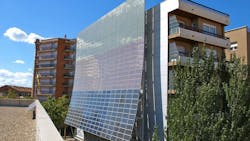Smart surfaces, materials maximize HMI efficiencies: Analyst
New research from Strategy Analytics contends that smart surfaces and materials are among the key building blocks to smart buildings, smart transportation and smart cities development, and that by integrating technology directly into the fabric of everyday objects such as walls, clothing and vehicles, the HMI [human-machine interface] environment in which consumers operate will become more inherently intelligent.
The new report from Strategy Analytics’ User Experience Strategies (UXS) service entitled, “Can smart surfaces create smarter HMIs? Advances & Use cases,” highlights broad and specific advancements in smart surfaces and materials which have the most impact on future use cases for personal devices, smart home devices, the automotive industry, and as the technology continues to evolve.
The research notes that while applications of smart technology can be far reaching, most focus is currently found within transportation, construction and healthcare industries.
Diane O’Neill, Director UXIP for Strategy Analytics and the report's author, commented, "Smart surfaces and materials have the ability to collect information from embedded sensors that can be used to feed into AI, support big data and facilitate machine learning. All this working towards the goal of automating life and making the world a more efficient, safer and sustainable place to live. So, in almost every application, the purpose of a smart surface or textile is to save space, save cost, or simplify a process. Employing smart surfaces to replace cumbersome additions has opened new opportunities and many more use cases such as enabling advanced HMI, generating energy, and enabling infrastructure for ‘new’ technologies such as 5G, AI, cloud and edge computing."
O’Neill continued, “Moreover, the application of smart surfaces in all industries works to enhance UX. This includes improving aesthetics, maximizing efficiencies of operation, self-cleaning, and privacy/sound reduction. Smart surfaces may also alleviate fears around usability, safety, and manufacturability through touch sensors with haptic feedback."
Lisa Cooper, Director UXS at Strategy Analytics, concluded, “All new technologies take time to proliferate. But the forerunners of smart technology are wearables and touchscreens and specifically, the way in which users interact with these devices. Innovations around these concepts have resulted in the popularity of devices with specific HMI, and this lends itself perfectly to the acceptance and proliferation of future more innovative technologies that may be inherently ‘smart’.”
For more information, visit www.strategyanalytics.com.
